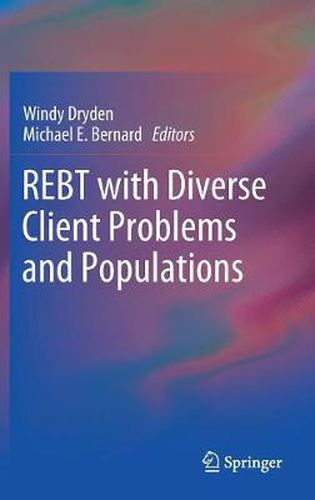Readings Newsletter
Become a Readings Member to make your shopping experience even easier.
Sign in or sign up for free!
You’re not far away from qualifying for FREE standard shipping within Australia
You’ve qualified for FREE standard shipping within Australia
The cart is loading…






This title is printed to order. This book may have been self-published. If so, we cannot guarantee the quality of the content. In the main most books will have gone through the editing process however some may not. We therefore suggest that you be aware of this before ordering this book. If in doubt check either the author or publisher’s details as we are unable to accept any returns unless they are faulty. Please contact us if you have any questions.
This practice-focused resource demonstrates effective uses of Rational Emotive Behavior Therapy methods and techniques in treating clients across various conditions, settings, and subgroups.
Client problems featured include both those often associated with REBT (e.g., anxiety, depression, anger) and others noted for complex presentations, difficulties with engagement, and impasses (e.g., addictions, suicidality, psychosis). Challenging treatment populations are covered as well, including women, couples, families, elder and pediatric clients, clients with disabilities, and sexual minorities. These stimulating cases show how well the diversity of clients and their concerns is matched by the flexibility of techniques and applications within REBT.
In each chapter, expert therapists:
*
Identify concepts in REBT especially suited to approaching the problem or population.
*
Outline best REBT practices in assessment and treatment of the client(s).
*
Survey evidence-based non-REBT approaches most useful in complementing REBT.
*
Provide a brief case example representing appropriate REBT in action.
*
Assess their use of REBT in treating the problem or members of the population.
A bedrock text for REBT scholar-practitioners, REBT with Diverse Populations and Problems is a testimony to the continuing usefulness of the therapy and its adaptability as client populations emerge and as the contexts of client problems evolve in response to a demanding world.
$9.00 standard shipping within Australia
FREE standard shipping within Australia for orders over $100.00
Express & International shipping calculated at checkout
This title is printed to order. This book may have been self-published. If so, we cannot guarantee the quality of the content. In the main most books will have gone through the editing process however some may not. We therefore suggest that you be aware of this before ordering this book. If in doubt check either the author or publisher’s details as we are unable to accept any returns unless they are faulty. Please contact us if you have any questions.
This practice-focused resource demonstrates effective uses of Rational Emotive Behavior Therapy methods and techniques in treating clients across various conditions, settings, and subgroups.
Client problems featured include both those often associated with REBT (e.g., anxiety, depression, anger) and others noted for complex presentations, difficulties with engagement, and impasses (e.g., addictions, suicidality, psychosis). Challenging treatment populations are covered as well, including women, couples, families, elder and pediatric clients, clients with disabilities, and sexual minorities. These stimulating cases show how well the diversity of clients and their concerns is matched by the flexibility of techniques and applications within REBT.
In each chapter, expert therapists:
*
Identify concepts in REBT especially suited to approaching the problem or population.
*
Outline best REBT practices in assessment and treatment of the client(s).
*
Survey evidence-based non-REBT approaches most useful in complementing REBT.
*
Provide a brief case example representing appropriate REBT in action.
*
Assess their use of REBT in treating the problem or members of the population.
A bedrock text for REBT scholar-practitioners, REBT with Diverse Populations and Problems is a testimony to the continuing usefulness of the therapy and its adaptability as client populations emerge and as the contexts of client problems evolve in response to a demanding world.